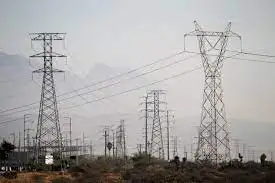Residents near nuclear plant evacuated
By Toronto Star
Protective Relay Training - Basic
Our customized live online or in‑person group training can be delivered to your staff at your location.

- Live Online
- 12 hours Instructor-led
- Group Training Available
Chief Cabinet Secretary Yukio Edano said the Fukushima No. 1 power plant was not leaking radiation. The plant is in Onahama city, about 270 kilometres northeast of Tokyo.
Japan's nuclear safety agency said the evacuation, ordered by the local government of Fukushima, affects at least 2,800 people. It comes after the government declared a state of emergency at the plant.
The quake triggered a power outage and when a backup generator also failed, the cooling system was unable to supply water to cool the reactor. The reactor core remains hot even after a shutdown.
Edano said residents were told to stay at least three kilometres from the plant and to stay inside buildings.
He said both the state of emergency and evacuation order are meant to be a precaution. It was the first time Japan has declared a state of emergency at a nuclear power plant.
“We launched the measure so we can be fully prepared for the worst scenario,” he said. “We are using all our might to deal with the situation.”
If the outage in the cooling system persists, eventually radiation could leak out into the environment, and, in the worst case, could cause a reactor meltdown, a nuclear safety agency official said on condition of anonymity, citing sensitivity of the issue.
The plant is just south of the worst-hit Miyagi prefecture, where a fire broke out at another nuclear plant. The blaze was in a turbine building at one of the Onagawa power plants smoke could be seen coming out of the building, which is separate from the plant's reactor, Tohoku Electric Power Co. said. It has since been extinguished.
Another plant at Onagawa is experiencing a water leak.
The U.S. Geological Survey said the 2:46 p.m. quake was a magnitude 8.9, the biggest earthquake to hit Japan since officials began keeping records in the late 1800s.
A tsunami warning was issued for a number of Pacific, Southeast Asian and Latin American nations.











